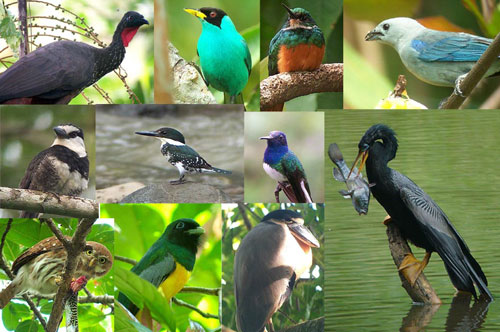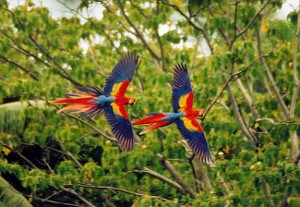Beyond visiting the beaches, adventure activities, surfing and fishing, there are a lot of tourists coming to Costa Rica every day to go into the woods to observe animals and are the most passionate about birds. The sighting of these colorful animals and singers is one of the activities listed over and over again among those who visit Costa Rica.
Sighting these colorful singers is one of the activities most listed among those who visit Costa Rica. In fact, a survey by the Instituto Costarricense de Turismo (ICT) indicates that last year 29.5% of tourists entering the country said they had made birdwatching one of their primary activities.
This equates to 430,000 people, enough to fill the National Stadium in La Sabana 12 times over.
The data was gleaned from surveys of non-residents entering and leaving the country via the airport in 2011 and among those whose visit was recreational tourism.
Paul Elizondo, a researcher at the National Biodiversity Institute (INBio), said that Costa Rica is very famous in the world because of the number of native and migratory bird species. The country has about 880 different species, 56 of which are endemic, or, unique to a specific geographic area.
Among the most commonly seen are the kettle black (Chamaepetes unicolor), the owl serranera or estucurú (Megascops clarkii), the cuyeo (Caprimulgus saturatus), the fiery-throated hummingbird (Panterpe insignis) and the volcano hummingbird-or Spark Volcanera (Selasphorus flammula).Other highlights are: the goldfinch (Myadestes melanops), the volcano junco (Junco vulcanized) and rualdo (Chlorophonia Callophrys).
The best time and place to watch? There birding sites across the country, and some of the most sought after are the areas of Los Santos in the Cerro de la Muerte, the Palo Verde National Park in Guanacaste, Monteverde, Puntarenas; Tortuguero on the Caribbean and Corcovado in Osa Peninsula.
The number and type of species observed constantly changes, especially the migratory variety, as they change their habitats to adapt to the changing climate. Migration mostly occurs in October southward. However, depending on the species, migratory populations may stay until late March and early April.
The Caribbean and Pacific coastal areas of central and northern areas are excellent for observing migratory birds. Though each ecosystem has its own unique variety of the easiest birds to see, each visitor has his own unique purpose.
Birding expert Marino Chacon notes that this recreational activity brings a great deal of passion with its enthusiasts. “There are people who wait years to see a bird, who have studied it, seen pictures and heard its singing in recordings, and for them is very important and satisfying to find it live and in and in the wild,” he explains.
“I remember crying when I finally saw this hummingbird.It was my dream, “said Canadian birder Sarah Tellman.
For birders the country has developed a significant tourism industry providing a comfortable infrastructure with high safety standards for the forest and observation sites. The tourist wants to come and watch birds and doesn’t want to worry about hotel, transportation and safety. It helps to know they are coming to an environment of political stability and security.
Infrastructure, political stability and security combined are helping to increase this burgeoning tourism and scientific research sector.


